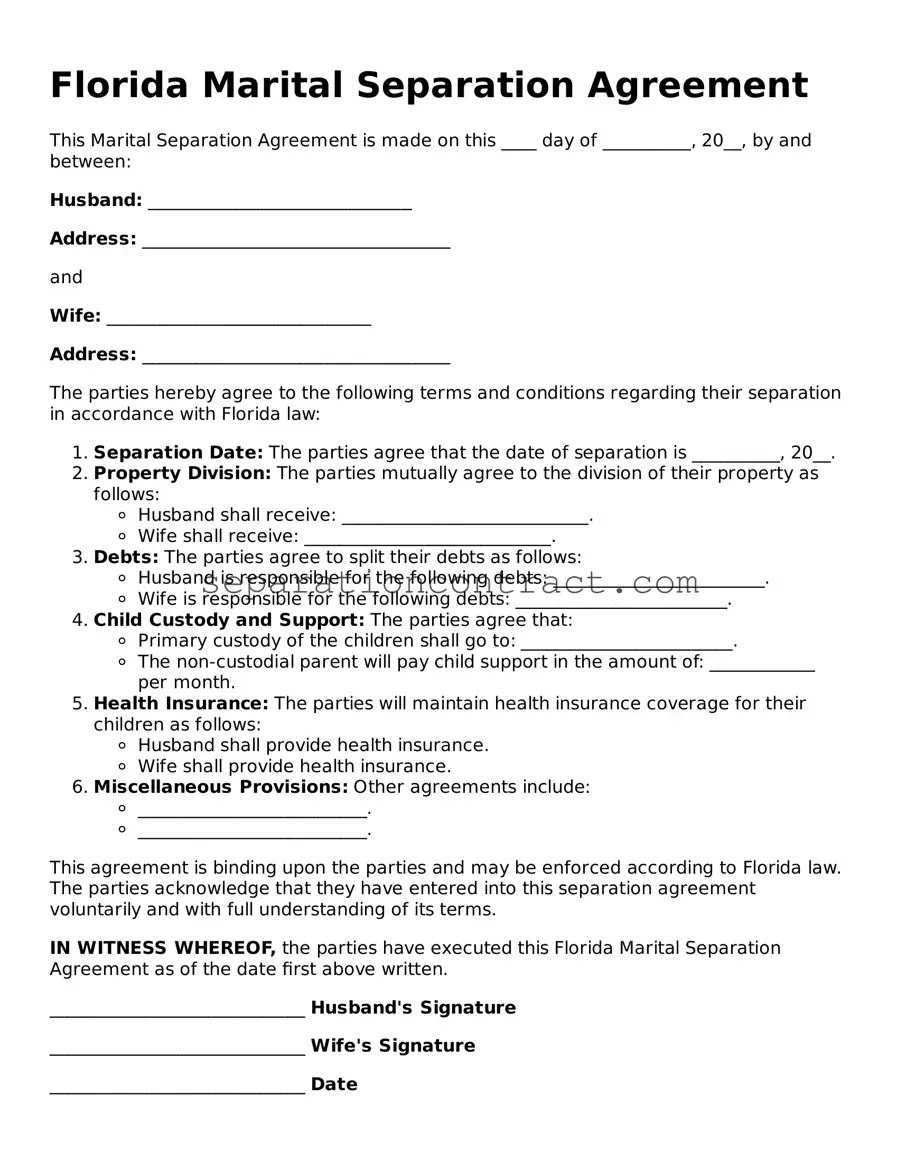Filling out the Florida Marital Separation Agreement form can be a daunting task, and many individuals make common mistakes that can complicate the process. One frequent error is failing to include all necessary personal information. It's essential to provide complete names, addresses, and other identifying details for both parties involved. Omitting this information can lead to delays or even rejection of the agreement.
Another common mistake is neglecting to clearly outline the terms of the separation. Vague language can create confusion and lead to disputes later on. It is crucial to specify how assets and debts will be divided, as well as any arrangements regarding child custody and support. This clarity helps both parties understand their rights and responsibilities moving forward.
Many individuals also overlook the importance of having the agreement notarized. A notarized document adds a layer of legitimacy and can prevent future challenges to the agreement's validity. Without this step, the agreement may not hold up in court, which can be problematic if disputes arise later.
Additionally, some people fail to consider the tax implications of their separation. For instance, dividing assets such as retirement accounts can have significant tax consequences. It is advisable to consult with a financial advisor or tax professional to understand how these decisions might impact both parties financially in the long run.
Another mistake is not addressing the future of shared debts. Simply stating that debts will be divided is insufficient. It is important to detail who is responsible for each debt and how payments will be managed. This oversight can lead to one party unfairly burdened with debt that should have been shared.
Moreover, individuals often forget to include provisions for future modifications to the agreement. Life circumstances can change, and having a plan in place for adjustments can save time and stress. Including a clause that outlines how changes can be made ensures that both parties are on the same page if they need to revisit the agreement.
Lastly, many individuals fail to seek legal advice before finalizing the agreement. While it may seem tempting to save money by filling out the form without professional help, this can lead to costly mistakes. Consulting with a legal expert can provide valuable insights and help ensure that the agreement is fair and compliant with Florida law.
